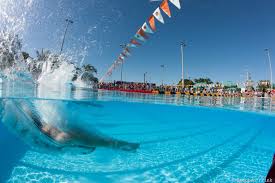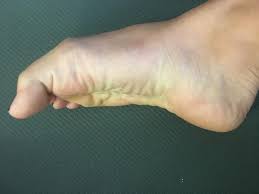Welcome back! Thank you for being patient during our week off from our Dolphin Kick series. Last week, instead of releasing a blog on Swim Like A. Fish, SwimOutlet posted an article I wrote called “How to Surf on Your Bow Wave” to their blog! This post is still jammed pack full of information! If you haven’t had a chance to read it– [CLICK HERE]. I promise you won’t regret it .

Let’s get started…
Two weeks ago, we discussed how you can easily double (or triple) your velocity in any of the three strokes–besides breaststroke. For the most part, this post was unanimously accepted but a few questions arose from some of our readers. Let me address them.
If you haven’t read Part I of this series, [CLICK HERE]. For Part II, [CLICK HERE]!
First off, just because you aren’t “good” at something doesn’t mean you should totally negate it. A few readers responded saying, “dolphin kick is easy—yeah right.” If that is what you took away from my post, that was not the message I was trying to convey at all!
Dolphin kick is hard, really hard.

But once again, just because something is hard doesn’t mean you shouldn’t do it or get better at it.
There are three main factors that make up a faster underwater velocity:
- A great push-off from the wall (or start)
- Minimizing your drag components by pointing your toes, having a tight streamline, and keeping an awesome, horizontal body alignment
- Having small, tight, and fast dolphin kicks (this includes ankle flexibility and leg strength)
If you look at those three main factors, two out of the three factors actually have nothing to do with whether you are good at dolphin kicking or not. So before you totally negate what I say, figure out the components you ARE good it and perfect them, while working on the others you may not be.
After all, we are not trying to create more speed by dolphin kicking–we are simply trying to maintain the high speed produced from the push off (or jump) for as long as we can!
So if you can perfect factors 1 &2, your velocity generated underwater will still be faster for a few brief seconds than any velocity you can generate on the surface. You just need to find how long (time-wise) that your velocity is higher underwater, before it decelerates too much and you’d be better off swimming.
Not sure what your velocity is, let me help you. I offer 1:1 stroke analysis and race analysis packages. If you have a video taken from a swim meet, I can analyze the video and give you all the metrics you need to figure out how long you should hold your streamline (i.e., velocity UW, velocity on the surface, stroke rate, etc.). For more information on these packages, [CLICK HERE].
Now, let’s dissect the dolphin kick itself:
The dolphin kick is a bidirectional kick that requires abdominal, hip, lower back, and leg strength. Also, an amazing amount of ankle flexibility and anaerobic conditioning.
In order to have a fast dolphin kick, you must be efficient with each of these four components. Let’s discuss each individual component in greater detail…
1.) Bidirectional: means in two directions.
The dolphin kick is composed of an “up kick” and a “down kick”. A swimmer must kick in both directions to have a fast dolphin kick.
Think of it like a bow and arrow. When you’re on your stomach, the “up kick” is when the arrow is being pulled back and the “down kick” is when the arrow is released. Both actions are needed to get the arrow to fly a long distance and with a high speed.
Lastly, complete both the “up kick” and the “down kick” in front of your body. Why?
We want your quads engaged. Your quads are the biggest muscle in your legs. They are capable of producing more power (due to size) than any other muscle in your legs. When you complete your dolphin kick in front of your body, you engage your quads more versus in a straight body line.
Think of it like kicking a soccer ball, do you ever finish your kick and make contact with the ball when your leg is directly below your body? No! The contact happens when the leg is in front of the body.
2.) Abdominal, hip, lower back, and leg strength.
For a successful dolphin kick, the swimmer must be strong. The dolphin kick starts from the core/back and is translated through the hips, legs, knees, ankles, and feet. That is why most coaches describe the dolphin kick as a wave. You create an undulation, which starts at the swimmer’s midsection and it translate down to the swimmer’s feet.
Speaking of the feet, they are the only component of a swimmer that creates any propulsion during a dolphin kick. This is a common error made by coaches and swimmers. All the other muscle groups (stated) simply aid in how much propulsion can be generated by the feet with each kick.
Remember: it is only the feet that push a swimmer forward in the pool. Try not to kick from your knees, hips, back, or core. They are all a necessary part of the wave, but you only move forward with help from your feet!
3.) Ankle Flexibility.
Everyone’s favorite topic of discussion. There is no doubt that ankle flexibility is needed for a successful dolphin kick. The more ankle flexibility you have, the better off your kick will be and vice versa. BUT, just because you may not have as much ankle flexibility as Michael Phelps doesn’t mean you automatically are bad at dolphin kicking. Let’s discuss.
It is universally known that when you dolphin kick—you must plantar flex your feet. By plantar flexing your feet, you are increasing the surface area on the tops of your feet. This increase in surface area gives you more area to kick down with, which means you are able to generate more propulsion.
Secondly, you want to make sure you have a smooth and fast transition from “up kick” to “down kick” back to “up kick”. If you focus on minimizing the time and minimizing drag between kick phases—you will generate a faster dolphin kick.
Thirdly, curl your toes. Has anyone ever told you to do that? If you curl your toes at the point when you finish your “up kick” and are starting your “down kick”– you are essentially increasing the surface area of your feet just like you did by plantar flexing.

Lastly, think about kicking backwards and not down. This will naturally help you plantar flex your feet and achieve an early vertical ankle. The goal is to move forward in the pool, not vertical in anyway.
Just like at the beginning of this post, three out of the four components of ankle flexibility are achievable by swimmers who don’t have a lot of plantar flexion. Perfect those components, while working on increasing your ankle flexibility and over time, your dolphin kick will show some major improvements!
4.) Anaerobic conditioning
Our last component of a dolphin kick. I hope all of you know what anaerobic means, especially because you all read my breathing series, right? If you don’t, anaerobic means without the presence of oxygen. When you are dolphin kicking, you are requiring your body to work with a depleting oxygen supply. Therefore, you must be in great shape and frequently train your body in this environment in order to have a successful dolphin kick.
Overall, there are many components that make up a successful dolphin kick. There is no fast pass or easy way to becoming a successful dolphin kicker. All of you should take advantage of your higher velocity coming off the walls and starts, so I urge you to maximize that time by improving your dolphin kick. After all, the goal is to be faster right?
No more excuses.
Get to work!
-Abbie Fish

5 Responses
I enjoy reading a post that will make men and women think.
Also, many thanks for allowing me to comment!
No problem! Thanks for reading!
This is the proper weblog for anyone who desires to search out out about this topic. You notice so much its almost onerous to argue with you (not that I really would want…HaHa). You undoubtedly put a brand new spin on a subject thats been written about for years. Great stuff, simply great!
I appreciate that very much! I really hope that my content resonates and helps others–that is the sole goal!